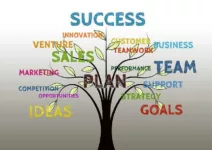Nowhere do inefficiencies take a toll on the bottom line quite like in sales. Cumbersome processes can hold back even the savviest of salespeople.
From above, those inefficiencies aren’t always easy to spot. Salespeople who seem busy may be wasting time reaching out to the wrong leads. They might be doing processes manually that can be easily automated.
So, where do sales inefficiencies tend to hide? In these four key areas:
Communication and Outreach
Communicating with leads is how sales get made. But because communication is the cornerstone of sales, it’s also where a lot of inefficiencies lurk.
Survey your salespeople. How many phone calls are they on each day? How many emails do they send? The reality is, most of those contacts probably don’t end in a sale.
Start with calls. Sit in on a few to find out whether your salespeople are often caught up in lengthy conversations. Find out how frequently they’re playing phone tag.
Most communication issues can be resolved by setting clear expectations. What’s the maximum duration a call should last? Are three attempts sufficient to reach a potential client?
With phone inefficiencies addressed, you can tackle email. Most sales emails go unresponded to, leaving salespeople to wonder whether the message was ever read.
Solve this problem, and learn more about your leads’ behavior, using an email tracking tool. Your salespeople will be able to see who’s opening their messages, how often, and on what device. With these insights, they can prioritize the hottest leads and let cold ones go.
Research and Preparation
Making a sale is all about being prepared. The trouble is, it’s not always clear where the line between prepared and overprepared lies. New salespeople, in particular, tend to over-prepare.
If they’re not careful, salespeople can spend hours learning every tidbit about their leads’ lives. Make sure they’re focused on the key details, like each lead’s budget and decision-making authority.
Here, sales assistants can save a lot of time. An intern can prepare reports on marquee leads, freeing up your sales stars to spend more time closing deals. Interns can also write follow-up emails, send thank-you cards, and log updates in your sales software.
Of course, research is only part of sales prep. Another aspect is planning the conversation. Without a templatized pitch and list of questions, salespeople may spin their wheels.
Develop a go-to directory, similar to an FAQ page, where your salespeople can find talking points. They don’t need to follow a script word for word, but they should have a general approach in their back pocket.
Crowdsource this directory. Your salespeople probably all do things a little differently. By sharing their techniques, they’ll naturally come to a consensus on the most effective ones.
Workflows and Handoffs
It may be difficult to hear, but your workflow itself could be the problem. Think through not just how salespeople handle their leads, but what happens before and afterward.
Map out your sales process. How is your marketing team generating and qualifying leads? Do sales development representatives warm them up first, or do your salespeople take the baton immediately?
Look for skipped steps as well as unnecessary ones. Maybe your SDRs aren’t properly vetting leads for fit before passing them on. On the other hand, they may be getting too close to those closing conversations — a task your salespeople are probably more suited to.
And what happens on the other side of the equation? How much time are your salespeople spending making introductions to account executives? If they’re preparing one-sheeters for the account team, why can’t account managers do this themselves?
Whatever your sales process looks like, a project management system can keep everyone on the same page. By making clear to everyone which stage each lead is at, a project management tool can minimize miscommunications and streamline handoffs.
Again, get input from your salespeople before settling on a certain tool. They’ll know best what software will be most efficient. It’s up to you to weigh their interests against the costs of each option.
Office Operations
On small teams, salespeople wear a lot of hats. You might be surprised at just how much your salespeople are doing outside the realm of sales work.
A 2018 study found that salespeople spent just 14 hours of their 40-hour workweek selling. While research takes time, chances are good that some of those 26 non-sales hours are spent on office tasks to help keep the business running smoothly.
While these tasks must be done, they shouldn’t fall to your salespeople. Not only does non-sales work waste their time, but it may result in burnout. Great salespeople know their worth, and they’ll move on if they feel underutilized. Frequent turnover will slow sales even further.
Ask your salespeople to list out all of the tasks they do in a given week. Decide which of these can be handed off to other members of the team.
Hire an office manager, if you haven’t already. Even if your salespeople do not have a lot of tasks they can delegate to this person, a clean environment can do wonders for their focus.
Your office space affects the well-being of your team more than you might think. The good news is, you do not need kitschy perks to create a productive space.
Keeping the floors clean costs no more than a vacuum cleaner and a little electricity. Sprucing up a sterile room might be as simple as placing a few live plants near the window. Carving out a space for meditation can help salespeople keep their heads in the right place on tough days.
Sales inefficiencies quite literally slow your whole business down. But remember, your salespeople should be focused squarely on sales; finding those inefficiencies falls to you.
Once you root them out, do not assume they’re gone for good. Every time the team’s composition changes, or you invest in a new tool, do another sweep. You might be surprised at just how much wasted time you find.








